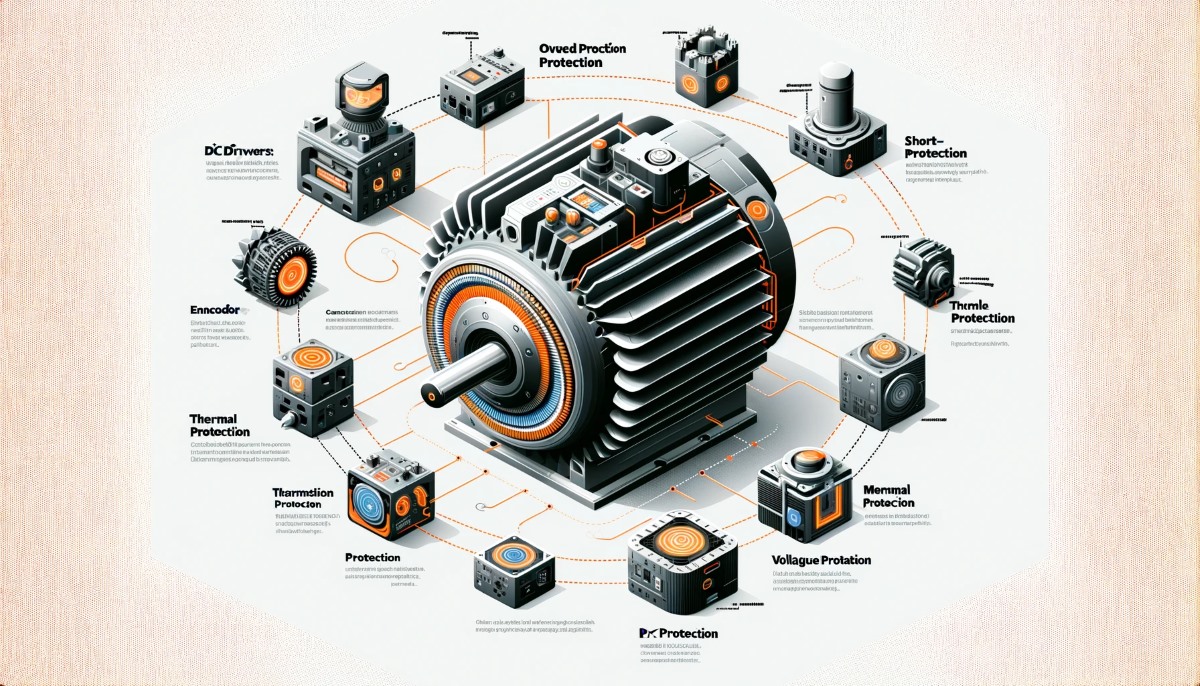Protection mechanisms for DC drives

Hello DC Control friends,
DC drives often incorporate various protection mechanisms to ensure safe and reliable operation. Some of the commonly used protection features are:
Overload Protection
To prevent the motor from being damaged due to excessive current, overload protection is often built in. This can either shut down the motor or reduce its speed to avoid overheating.
Overvoltage and Undervoltage Protection
DC drives often include circuits to detect when the input voltage goes beyond or falls below the acceptable range, taking appropriate action to protect the motor and drive electronics.
Thermal Overload Protection
Temperature sensors may be included to monitor the motor winding and/or drive electronics temperature. If an over-temperature condition is detected, the drive may shut down or reduce power to the motor.
Short Circuit Protection
In the event of a short circuit, protective mechanisms quickly disconnect the drive to prevent damage to both the drive and the motor.
Phase Loss Protection
Though more relevant for AC motors, some advanced DC drives also offer protection against phase loss, which can be essential when DC motors are powered by phase-controlled rectifiers.
Current Limiting
Current limiting features help to keep the motor current within safe limits, particularly during startup or under fault conditions.
Ground Fault Protection
Detects if there is a leakage current to ground and takes appropriate action to prevent electric shock hazards.
Brake Control
Some DC drives include built-in brake control features to safely bring the motor to a stop in the event of an emergency or specific conditions.
Speed and Position Limits
To prevent damage or unsafe conditions, speed and position limits can often be set, ensuring that the motor does not exceed predefined limits.
Communication Fail Safe
In drives that are controlled via a communication network, safety mechanisms are often in place to revert to a predefined state in case of communication failure.
Reverse Polarity Protection
This feature prevents the motor from turning in the opposite direction if the polarity of the supply is reversed accidentally.
Motor Stall Protection
Sensors can detect if the motor has stalled and take actions to rectify the condition, such as shutting down the drive or attempting to restart the motor.
These are some of the typical protective features you might find in a DC drive. Always consult the manufacturer's specifications to understand what protections are included in a specific model, and ensure they meet the safety requirements of your application.
While the use of DC drives in industry (at least at high power levels) has diminished, they are still widely found. Below, we have attempted to answer the most frequently asked questions about DC drives from our visitors.
- What are the operating principles of DC drives?
- What are the different types of DC drives?
- What are the key differences between DC drives and AC drives?
- What are the typical applications for DC drives?
- How energy-efficient are DC drives?
- What are the control methods used in DC drives?
- What type of DC drive is most suitable for a specific DC motor?
- What are the most common problems and solutions associated with DC drives?
- What are the power ranges used in DC drives?
- What additional components are used alongside DC drives?
- What are the advantages and disadvantages of DC drives?
- How do I choose a DC drive?
- How scalable are DC drives?
- Is integration between a DC drive and a PLC possible?
- What are the lifespan and maintenance requirements for DC drives?
- What safety features are included in DC drives?
- How is the dynamic response in DC drives?
- What feedback options are available in DC drives?
- What types of protection mechanisms are used in DC drives?
- What types of sensors can be used with DC drives?
These questions generally also encompass the types of queries that many people may have about DC drives. Each user or student will have their own unique question or interpretation depending on the specific situation or application. The answers provided are not binding and are not definitive. "You are welcome to share the article above as long as you cite it as the source." 05.2019
Your shopping cart is empty!
